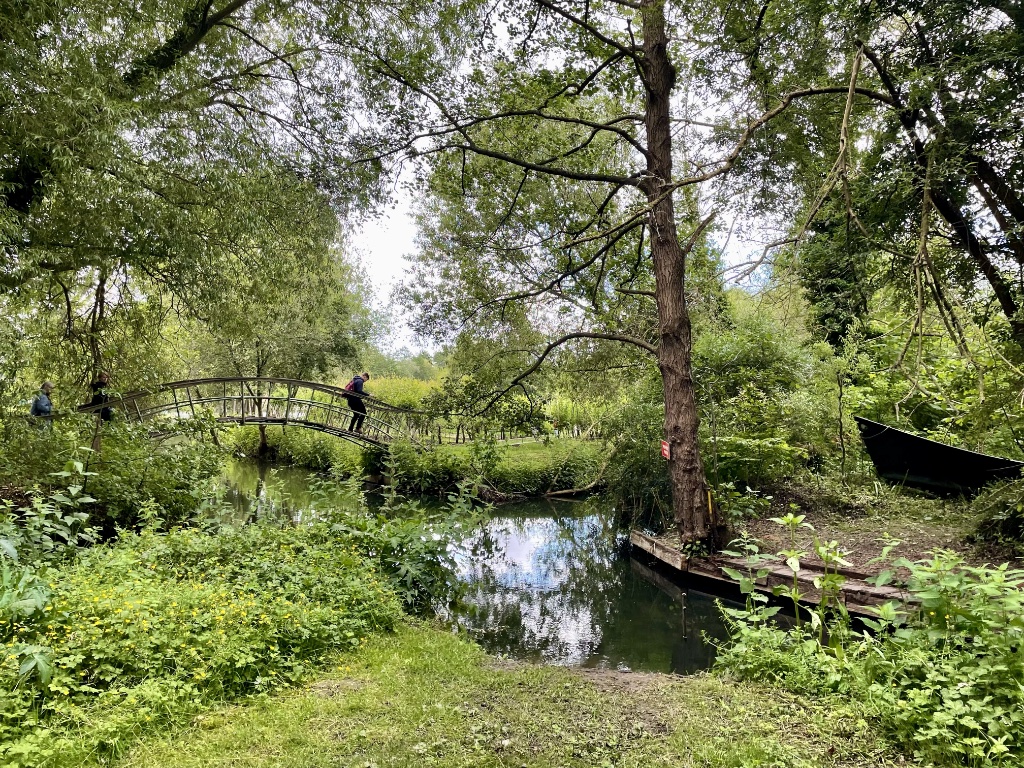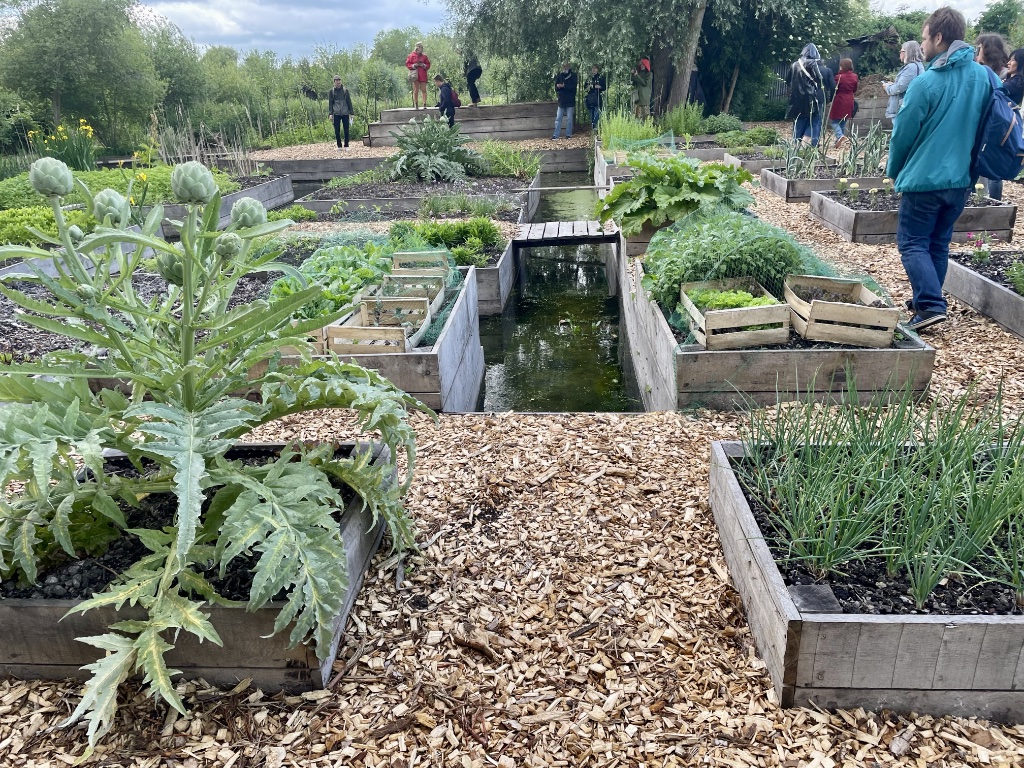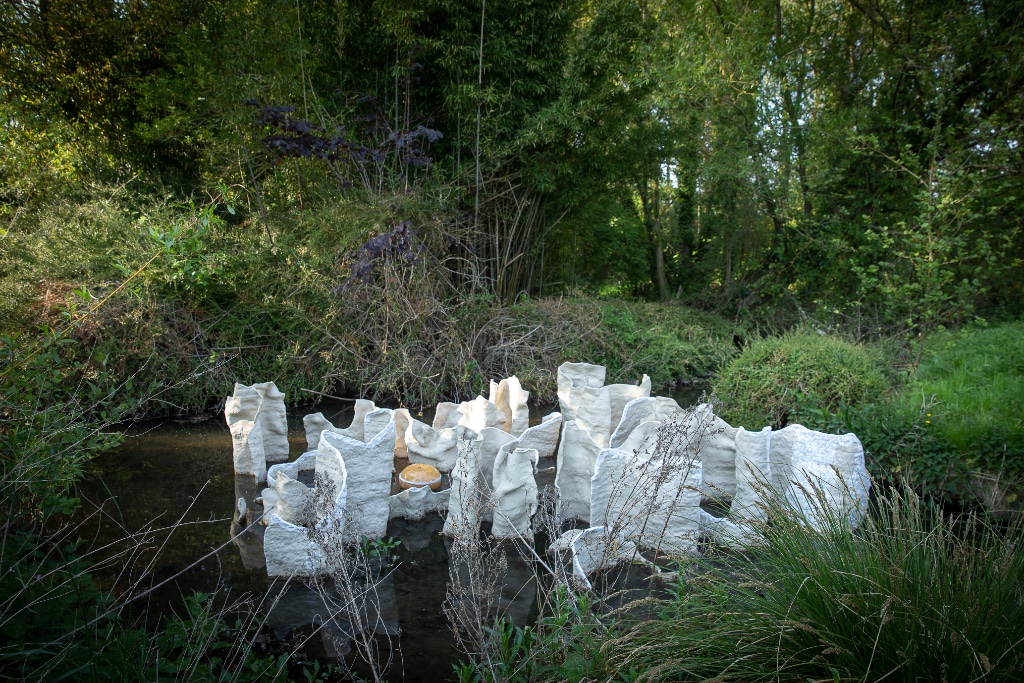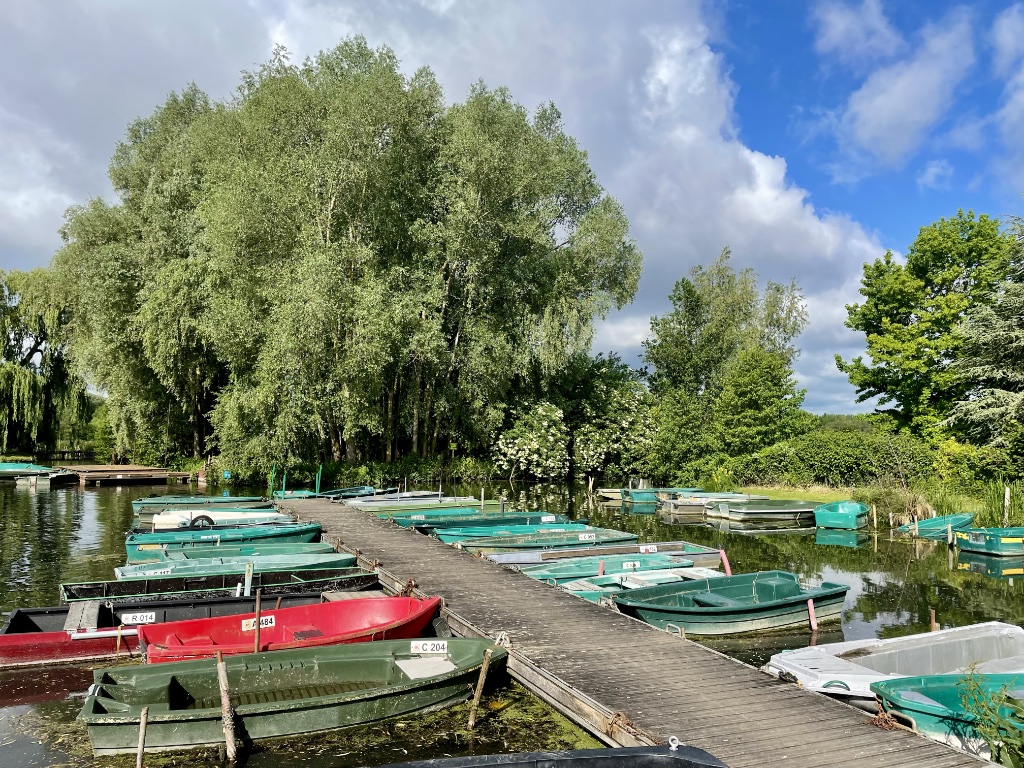
An immense, watery green paradise called Les Hortillonages lies in the very heart of the city of Amiens, close to its famous Notre Dame Cathedral and traversed by the River Somme. Forget about motor vehicles and public transportation in this haven blissfully free of noise and pollution – the floating gardens on its islands can only be reached by boat or on foot.
The Hortillonages have existed for seven centuries and once served as the city’s food basket, with market gardens tended by their owners on most of the islands. In 1900, there were a thousand under cultivation, but today there are only nine, victims of difficult farming conditions and changing agricultural practices and weather.
We met one of the last farmers, Francis Parmentier, when we visited the Hortillonages at the end of May. “I’m the only one who works with a boat,” he told us. He practices sustainable farming for crops including cauliflower, tomatoes cabbage, potatoes, leeks and radishes, but his daughter plans to go organic when she eventually takes over for him.

To help preserve this unique environment made up of 35 percent water, the Festival International de Jardins–Hortillonnages Amiens was founded in 2010. The islands are rented from their owners (most of whom use them for private gardens or second homes) by the festival, which helps maintain the environment and shore up the banks. “If it hadn’t been for the festival,” said Parmentier, “I would have given up by now.”
Each year, young (under 45) artists, architects and landscape architects are invited to submit projects to be built on one of the islands. An international jury selects around 10 or 15 of them and decides which of the existing projects will remain in place. Right now, there are 46 installations, which can be visited on a fleet of small wooden boats or on foot, along a towpath. This year, there are 12 new projects.
To create their installations, the participants have to deal with the same difficult conditions that have discouraged farmers over the years. All the building materials must be brought in by boat, and meteorological conditions can cause trouble. “One project dealing with the problem of rising waters was drowned by rising waters,” said the festival’s director, Gilbert Fillinger, on the day I visited.
Most are still above water, however, and boat-hopping to visit one project after another is a lovely, relaxing way to spend a few hours.

In 2010, landscape architect Florent Morisseau turned an island covered in a tangle of brambles and willow trees into a market garden with floating vegetable and flower beds for his still-flourishing “Potager Embarqué,” returning the island to its original purpose.

A more recent project, from 2019, is artist Raphaëlle Duquesnoy’s “Hortillophones,” acoustic machines that look like primitive hearing aids and amplify the soundscape. Listen carefully, and you might be able to eavesdrop on the conversation of people walking on the other side of the canal.

One of this year’s projects, “Akpaku,” by artist Kokou Ferdinand Makouvia, has a spiritual side. A large akpaku (calabash), representing the invisible world on Earth in his native Togo, was filled with small objects from the Hortillonnages, planted in the water and surrounded by a sculpture of ceramic lettuce leaves, creating a “sacred space” for “conversations” with nature. Visitors are invited to speak to a handful of soil and throw it into the water to initiate their own conversation.
Before or after you wander around the Hortillonnages, be sure to pay a visit to the city’s cathedral, which was painted by Claude Monet no fewer than 30 times to record the changing effects of light and weather on its facade. It is the largest and most stylistically unified Gothic cathedral in France because it was built so quickly, between 1220 and 1270.
For sustenance during your day in Amiens, I can heartily recommend a nearby gourmet restaurant, Les Orfèvres.

For a two-and-a-half-hour independent boat tour of the islands (why not bring a picnic?), reserve an electric motor boat in advance (click here or call 06 78 53 55 92) and pick it up along with an itinerary at Port à Fumier, 35, rue Roger Allou in the neighboring community of Camon. Prices range from €20 to €30, depending on the size of the boat. To visit on foot for free, go to l’Île aux Fagots, 43, chemin de Halage, Amiens.
Open on Wednesday, Thursday and Friday 10am-7pm through July 3. Open daily, 10am-7pm, July 4-September 4. Open Saturday-Sunday, 10am-7pm, September 5-October 6.
Favorite
Super article ! Nous avions fait une virée à Amiens sur les hortillonnages voilà des années et y sommes retournés récemment sur la journée pour visiter le musée qui a réouvert après 2 ans de travaux. Très beau musée aussi. A ne pas manquer.
Merci, Françoise !